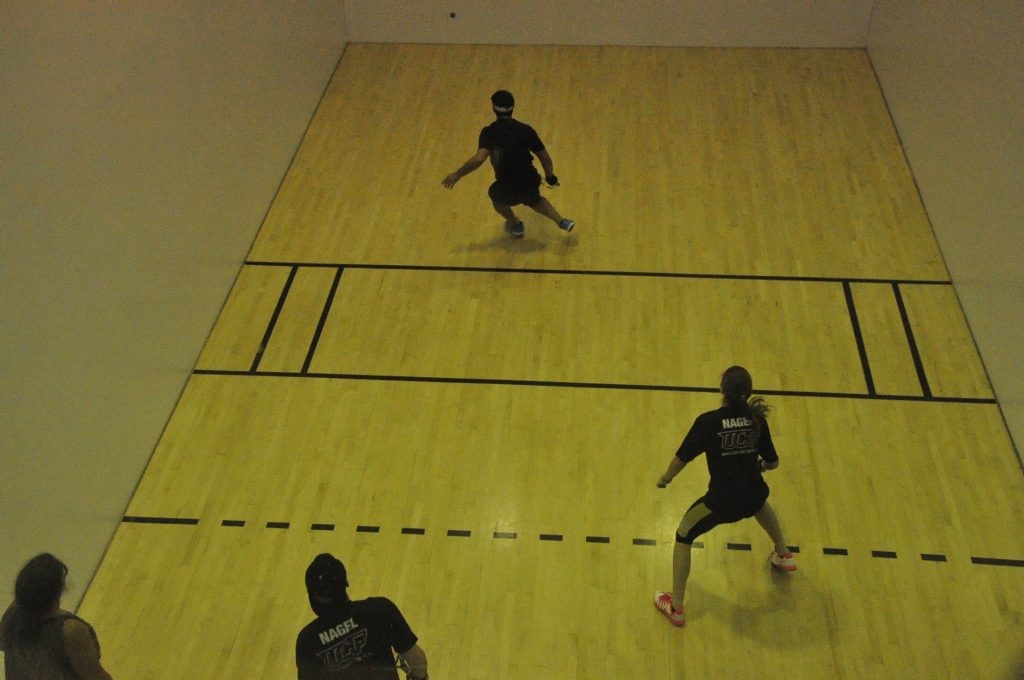Exploring Racquetball: The Dynamic Sport of Speed and Strategy

Exploring Racquetball: The Dynamic Sport of Speed and Strategy
Racquetball, a fast-paced and exhilarating sport, blends elements of speed, strategy, and skill into an intense athletic experience. Played in indoor courts with distinctive glass walls, racquetball has captivated enthusiasts worldwide for decades, offering both recreational enjoyment and competitive challenges.
Origins and Evolution
Racquetball traces its origins to the mid-20th century when Joe Sobek, an American tennis and handball player, combined aspects of these sports to create a new game. Initially known as "paddle rackets," racquetball quickly gained popularity for its accessibility and dynamic gameplay. By the 1970s, the sport had established international recognition, with formalized rules and governing bodies.
Gameplay and Equipment
Central to racquetball's appeal is its straightforward yet intense gameplay. Players use solid racquets to hit a rubber ball against the walls of a four-walled court. The objective is to outmaneuver opponents by strategically placing shots to make it difficult for them to return the ball. The speed of play and the requirement for quick reflexes and agile movement make racquetball both physically demanding and mentally stimulating.
The standard equipment includes a racquetball racquet, similar in shape to a tennis racquet but shorter and designed for faster swings, and a high-bounce rubber ball specifically designed for the sport. Protective eyewear is mandatory to prevent eye injuries due to the high-speed nature of the game.
Fitness and Health Benefits
Racquetball offers numerous fitness benefits, making it a favorite among athletes and fitness enthusiasts. The sport provides a rigorous cardiovascular workout, promoting heart health and endurance. The constant movement and rapid direction changes improve agility, balance, and coordination. Additionally, the explosive movements involved in swinging the racquet and sprinting across the court enhance muscular strength and power.
Community and Competitive Scene
Beyond its physical benefits, racquetball fosters a vibrant community of players who often participate in leagues, tournaments, and recreational matches. Local clubs and facilities worldwide provide opportunities for players of all skill levels to engage in friendly competition and socialize with fellow enthusiasts. At the competitive level, professional tournaments showcase top-ranked players competing for prestigious titles and prize money, attracting a dedicated following of fans.
Strategy and Tactics
Successful racquetball players combine technical skill with strategic acumen. Key tactics include varying shot selection, utilizing angles to exploit opponents' weaknesses, and maintaining court position to control rallies. Players must anticipate their opponent's moves while executing precise shots under pressure, requiring mental focus and adaptability throughout the match.
Accessibility and Inclusivity
Racquetball's accessibility contributes to its widespread appeal. Courts are available in many recreational facilities, schools, and community centers worldwide, allowing individuals of all ages and backgrounds to participate. The sport's adaptability to different skill levels ensures that beginners and experienced players alike can enjoy challenging matches and improve their abilities over time.
Future Outlook
As racquetball continues to evolve, innovations in equipment and training methods enhance player performance and spectator engagement. The sport's global reach and growing participation reflect its enduring popularity and potential for future growth. Efforts to promote inclusivity and diversity within the racquetball community ensure that the sport remains accessible and welcoming to all.
In conclusion, racquetball stands as a dynamic sport that combines athleticism, strategy, and camaraderie. Whether played competitively or for recreation, racquetball offers an exhilarating experience that challenges both body and mind, making it a beloved pastime for millions worldwide.
- Arts
- Business
- Computers
- Games
- Health
- Home
- Kids and Teens
- Money
- News
- Recreation
- Reference
- Regional
- Science
- Shopping
- Society
- Sports
- Бизнес
- Деньги
- Дом
- Досуг
- Здоровье
- Игры
- Искусство
- Источники информации
- Компьютеры
- Наука
- Новости и СМИ
- Общество
- Покупки
- Спорт
- Страны и регионы
- World


